Scientific name Alosa Phylum Chordata Found in Lake Garda | Higher classification Shads Rank Genus | |
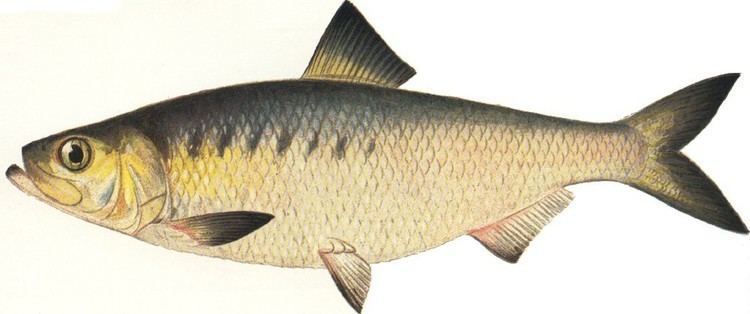 | ||
Lower classifications American shad, Alewife, Allis shad, Twait shad, Alosa agone | ||
Pesca de mar robalo tainhas e savelha sea fishing for seabass mullet and alosa fallax
Alosa is a genus of fish, the river herrings, in the family Clupeidae. Along with other genera in the subgenus Alosinae, they are generally known as shads. They are distinct from other herrings by having a deeper body and spawning in rivers. Several species can be found on both sides of the Atlantic Ocean and Mediterranean Sea. Also, several taxa occur in the brackish-water Caspian Sea and the Black Sea basin. Many are found in fresh water during spawning and some are only found in landlocked fresh water.
Contents
- Pesca de mar robalo tainhas e savelha sea fishing for seabass mullet and alosa fallax
- Video alosa fallax wmv
- Appearance
- Biology
- Lifecycle and reproduction
- Systematics
- North America
- Western Europe and the Mediterranean
- Caspian Sea Black Sea the Balkans
- Management
- Political significance
- Culinary use
- References
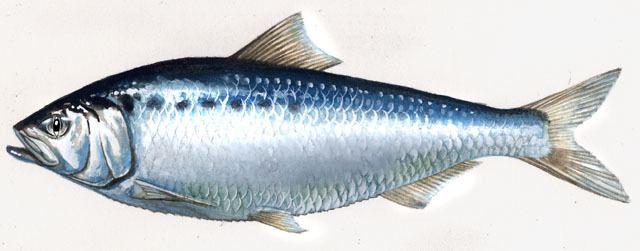
Video alosa fallax wmv
Appearance
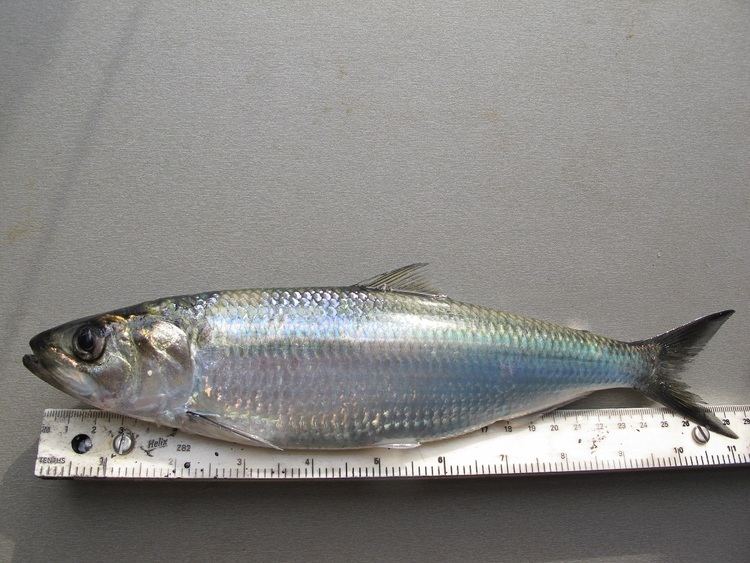
Alosa species are generally dark on the back and top of the head, with blue, violet, or greenish tints. However, some can be identified as having a grey or green back. Spots are commonly found behind the head, and the fins may vary from species to species or individually. Most species of Alosa weigh 300 grams (11 oz) or less, with one species, A. pontica, weighing up to 2 kg.
Biology
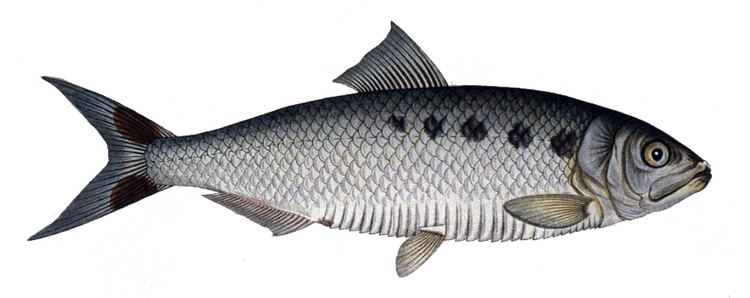
Shads are thought to be unique among the fishes in having evolved an ability to detect ultrasound (sound at frequencies above 20 kHz, which is the limit of human hearing). This was first discovered by fisheries biologists studying a type of shad known as blueback herring, and was later verified in laboratory studies of hearing in American shad. This ability is thought to help them avoid dolphins that find prey using echolocation. Alosa species are generally pelagic. They are mostly anadromous or semianadromous with the exception of strictly freshwater landlocked species. Alosa species are generally migratory and schooling fish. Males usually mature about a year before females; they spawn in the late spring to summer. Most individuals die shortly after spawning. Alosa species are seemingly very adaptive vertebrates, so can change readily to adapt to their environments, as species are found in a variety of temperatures and waters.
Lifecycle and reproduction
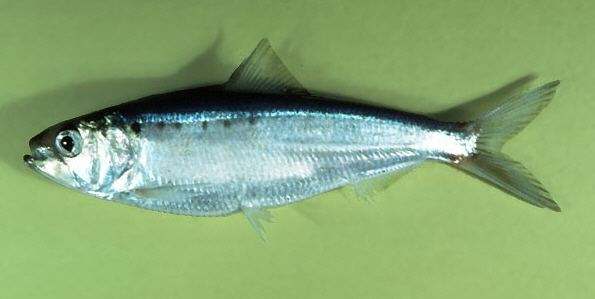
As Alosa species are generally anadromous, they are faced with various obstacles to survival. They may have to pass through numerous barriers and waters to get to either their spawning grounds or normal habitats (the sea in most cases). Estuaries are a major factor in numerous Alosa species' migration. Estuaries can be highly variable and complex environments contributing to fluctuating biological interactions, with shifts in osomolarity, food sources, predators, etc. Since many adult Alosa species die after spawning, the young generally have to migrate to the sea from the spawning grounds. Duration of migration varies among fish, but it can greatly affect survival.
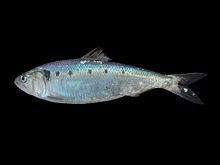
Reproduction varies by species. Studies done on Alosa in Iranian waters have shown that spawning varies in time, place, and temperature of the waters they inhabit. Fecundity may also vary. Species are known to spawn as early as April or as late as August. Temperatures range from about 11 to 27 °C. Fecundity can range from 20,000 to 312,000 eggs. Eggs are pelagic.
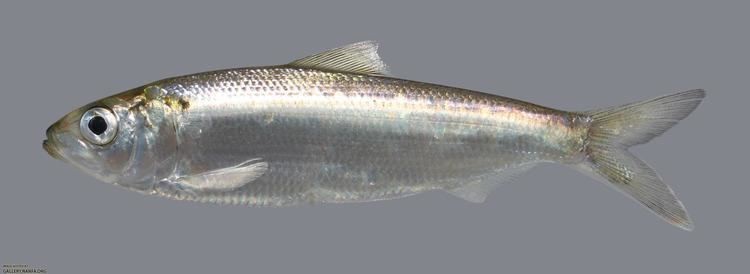
The lifespan of Alosa species can be up to 10 years, but this is generally uncommon, as many die after spawning.
Systematics
The systematics and distribution of Alosa shads are complex. The genus inhabits a wide range of habitats, and many taxa are migratory. A few forms are landlocked, including one from Killarney in Ireland, two from lakes in northern Italy, and two in Greece. Several species are native to the Black Sea and Caspian Sea. Alosa species of the Caspian are systemically characterized by the number of rakers on the first gill arch. They are classified as being "multirakered," "medium-rakered," or "oligorakered." The multirakered are primarily plankton feeders, the oligorakered have large rakers and are predators, and the medium-rakered generally consume a mixed diet. Most current species of the Alosa genus in North America can be found in Florida, whereas the distribution of most of them is broader.
Morphology is notoriously liable to adapt to changing food availability in these fish. Several taxa seem to have evolved quite recently, making molecular analyses difficult. In addition, hybridization may be a factor in shad phylogeny. Nonetheless, some trends are emerging. The North American species except the American shad A. sapidissima can probably be separated in a subgenus Pomolobus. Conversely, the proposed genus (or subgenus) Caspialosa for the Caspian Sea forms is rejected due to paraphyly.
North America
Western Europe and the Mediterranean
Caspian Sea, Black Sea, the Balkans
Management
Shad populations have been in decline for years due to spawning areas blocked by dams, habitat destruction, pollution, and overfishing. Management of shad has called for more conservative regulations, as well as policies to help the species obtain a lower fishing mortality.
Political significance
Shad serve a peculiar symbolic role in Virginia state politics. On the year of every gubernatorial election, would-be candidates, lobbyists, campaign workers, and reporters gather in the town of Wakefield, Virginia, for shad planking. American shad served as the focal point of John McPhee'S book The Founding Fish.
Culinary use
The roe, or more properly the entire engorged uterus of the American shad - filled with ripening eggs, sautéed in clarified butter and garnished with parsley and a slice of lemon - is considered a great delicacy, and commands high prices when available.
